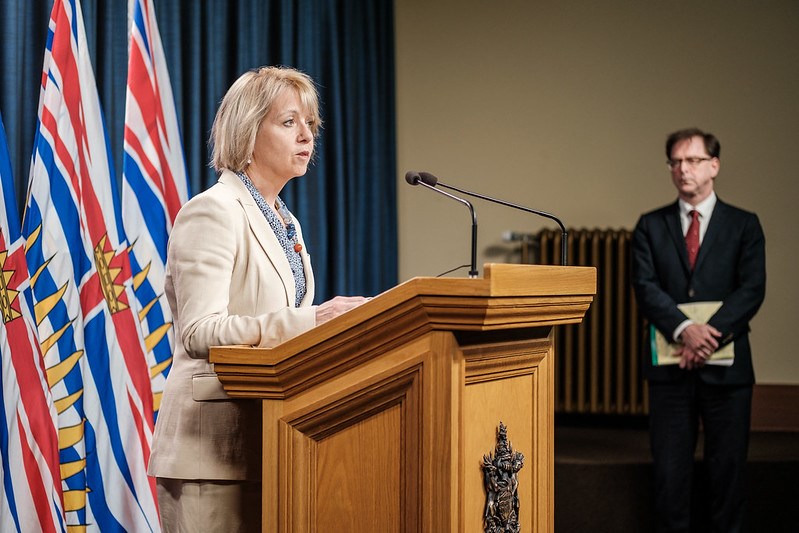Health-care workers at long-term care and assisted-living homes will not be allowed to work at more than one facility during the COVID-19 outbreak, in an effort to help prevent the spread of the disease. The move will cost an estimated $10 million a month.
Provincial health officer Dr. Bonnie Henry announced the order during her regular press briefing at the B.C. legislature on Thursday.
“We have mentioned it before, but as of today it’s official,” she said.
Residents at are very vulnerable to COVID-19, said Henry. She said one of the most important things we can do to protect them, and those caring for them, is to make it possible for workers to provide services at a single location facility, reducing the risk of virus transmission between facilities.
Thirty people at long-term care or assisted living homes have died of COVID-19 in B.C., and officials believe the virus was spread in some cases by people who worked at more than one facility.
There have been outbreaks at 24 facilities in the province, and Henry said 235 of the 462 active COVID-19 cases in B.C. were in long-term care or assisted living homes.
Health care workers at all facilities will be given equitable wages and benefits and scheduling stability so they can work at a single site without financial hardship or disruption to services for residents.
B.C. Health Minister Adrian Dix said the new labour agreement, which involved “probably 50 to 60 different collective agreements,” will cost an estimated $10 million a month. It applies to all facilities in B.C., whether they are privately owned, non-profit or run by health authorities.
The change was necessary so workers didn’t abandon lower-paying sites, potentially leaving those homes understaffed during a public health emergency, Dix said.
“If everyone who was working in two care homes decided to … move over to work in one, that would obviously negatively affect care,” he said.
Jennifer Whiteside, secretary-business manager of the Hospital Employees’ Union, said the changes affect about 300 facilities in all.
“There’s been enormous work happening behind the scenes to collect information about how many employees there were, and where they work at multiple sites, which site they prefer to work at for the duration of the order,” she said.
Whiteside said it was “absolutely necessary” there be a standard in terms of wages, benefits and work conditions.
Unions, including the HEU, have been pushing for two decades to restore a level playing field for wages in long-term care and assisted living homes with publicly funded beds.
“This has been a problem in long-term care for a long time,” she said.
The changes will remain in place during the COVID-19 pandemic.
“Let me be clear, this does not alter the existing framework of how long-term care and assisted living services are provided,” Dix said.
Since March 26, staff at facilities with outbreaks have not been allowed to work at more than one site. The move followed major outbreaks at two care homes in the Vancouver area.
Dix acknowledged the B.C. Care Providers Association as one of the first organizations to advocate to the provincial health officer for a single site directive and thanked the HEU, B.C. Nurses Union, and B.C. Government and Service Employees’ Union for working collaboratively to support the direction.
“It’s been a complicated thing, a lot of moving pieces,” he said, “but I think we’re doing the right thing for workers and the right thing for residents.”



